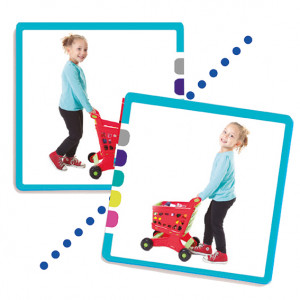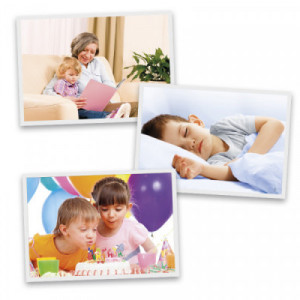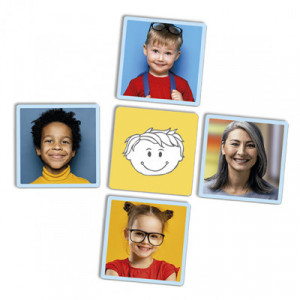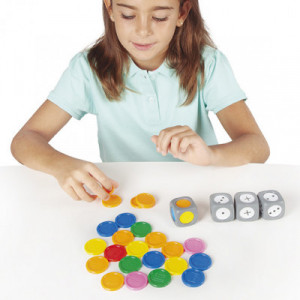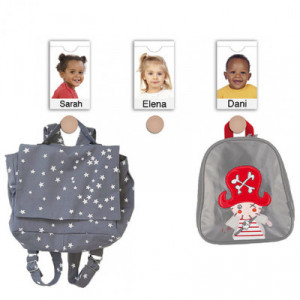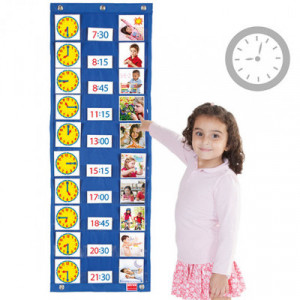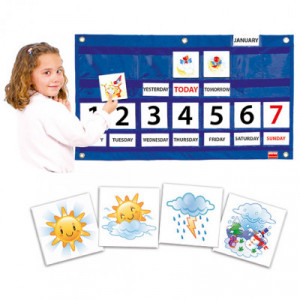Autistic Spectrum Disorder (ASD)
Autism is a condition that affects the way a child sees the world, processes information and interacts with others. Children with Autism Spectrum Disorders (ASD) find it difficult to develop social relationships, communicate and think abstractly.
That is why games should help them to develop their social skills, facilitate their understanding of emotions, encourage communication, stimulate their motor skills, and above all, should enhance their creativity and develop their strengths.
We have selected the following games and materials for you to choose the ones that best suit your specific needs and preferences.
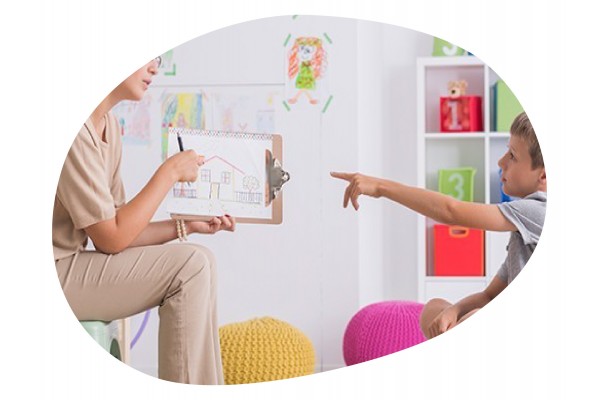
Specialized toys for children with autism
Autism spectrum disorders pose communication difficulties. After diagnosis, parents should gather as much information as possible about the specific disorder affecting their child, as each therapy is individualized. Children's playground equipment with ASDs, in addition to entertainment, provides a channel for connecting with children. By playing, children build self-esteem, feel they are winners and are motivated by learning.
- Face recognition games are for preschool and elementary students. Facial expressions pose real problems for children with ASDs. The games solve these difficulties in a playful environment, and that the autistic child begins to interpret the information provided by other people's expressions.
- Thanks to toys that incorporate illustrations about daily activities, parents can communicate with children with autism to discuss their needs.
- In general, autistic children prefer games that stimulate them. Toys with bright colors or sounds to interact with. Each child with ASD is different, and their developmental level will show parents which activities best stimulate them. In cases of acoustic hypersensitivity problems, activities in noisy places should be avoided.
- If the child with ASD enjoys drawing, drawing games and activities will help him or her communicate. Parents can verbalize the pictures, and vice versa. Effective communication can be achieved through imitation. If the child has his or her rituals when it comes to playing or keeping games, parents can do the same. Through empathy, it is possible to achieve common tasks.
- If the child prefers construction games, adults can interact with him/her. They must avoid invasion of their personal space or end activities for it; they need to be given their time. Interaction takes place through clear and concise requests.
Positive behavioral reinforcements tell the child when he or she is behaving well. Depending on the child's preferences, they can be compliments for their performance, toys or food, among others.
ASD Information
Autism is a disability with multiple clinical and behavioral expressions. The diversity of ASDs is as diverse as that of people: there are cases with a diagnosis of profound intellectual disability, also with normal intelligence, and even gifted people.
Symptoms manifest themselves in a variety of ways and persist for life. One in four people with ASD has above-average or equal intellectual performance. As a general rule, when autistic people approach adulthood, they gain personal autonomy. Some cases of autism, due to lack of adaptability, can cause such problems that people need constant support. Others affected by the disorder, on the other hand, can lead a normal, independent life without undue difficulty.
The ABA method with autism patients
The ABA (Applied Behavior Analysis) model of intervention promotes improvement in the behavior of the autistic person through behavioral techniques. The main objective of the method is to encourage learning and internalization of new skills, and to reduce inappropriate behaviors through positive reinforcement. Any behavior therapy follows the premise that when a behavior receives some kind of reward, it tends to recur.
According to the U.S. Department of Health, 30 years of research has demonstrated the effectiveness of ABA methods in reducing dysfunctional behaviors and improving and increasing communication, learning and socially appropriate behaviors. The areas in which this type of intervention is most commonly used are education, social services, clinical psychology or rehabilitation, among others.
What is the ABA method?
The ABA method applies the science of behavioral analysis to the rehabilitation of ASD (Autism Spectrum Disorder) patients in order to address issues related to their socialization and quality of life. Successful applications of the ABA method have been documented in various patient profiles:
- Those with severe disabilities, and those with high intelligence.
- Young or adult patients.
- Those with mild motor disabilities and those with complex motor problems.
The field in which the ABA method has shown significant success in its application is in the therapy of infantile autism through the so-called: early intensive behavioral intervention. Studies conducted in 1987 at the University of Los Angeles showed that autistic children who had been receiving ABA therapy for years clearly improved their behavior. Within the group investigated, certain cases lost their diagnosis of ASDs.
This improvement is achieved if 3 requirements are met:
- Early intervention. The sooner, the better; the ideal age is around the child's first 24 to 36 months of life. Therapy should be extended from 30 to 40 hours per week, and for a minimum of 2 years.
- Involvement of the family in the treatment. Parents should reinforce at home what their child learns in therapy sessions and have them assimilate their learning in a different setting from the clinic.
- That the child receives individualized treatment according to his or her characteristics. The ABA intervention should not be a kind of template where all patients enter, but should investigate the child and know his or her abilities, needs, family situation and personal interests.
Basic procedures and techniques of the ABA method
A particular behavior is considered active when it operates in the environment to produce certain consequences. According to this principle, behaviour is shaped by the consequences it receives when it occurs. Therefore, the consequences determine the form and frequency with which such an act will be repeated in the future. The key concepts are: reinforcement, extinction, stimulus control and generalization.
- Reinforcement, or incitement, is defined as any consequence of reinforcing behavior, that is, increasing the frequency and likelihood of its occurrence. It can be negative (to avoid a possible aversive stimulus) or positive (to capture the patient's attention, or to execute a certain activity).
- When reinforcement, positive or negative, is no longer applied, the likelihood of future behavior is reduced.
- Stimulus control occurs when a particular behavior occurs: only in the presence of a stimulus and not in its absence.
- Generalization allows, on the contrary, the transfer of learned behaviors in a variety of contexts and environments.
Therapeutic application of ABA
These concepts are applied through four procedures:
- Incitement or prompting. It consists of the presentation of a clue or help for the child to deduce the desired behavior that is not yet in his or her behavioral repertoire.
- The extinction of aid. Gradual reduction in patient care until the child has acquired the new behaviour and has disappeared. In later stages, teaching decreases as the patient becomes involved, follows instructions and offers autonomous responses and develops activities.
- Behavioral consolidation. It consists of the systematic reinforcement of the child's successive responses the closer they are to the target behaviour.
- Sequential chaining. It is used to show the sequences or steps of each behavior. A child with ASD may not be able to assimilate complex behaviors at one time, but can assimilate the concept when divided into small behaviors in a certain order.
Example of ABA therapy
Behavioral therapy is often beneficial to any patient with a disability, whether or not the behavior is affected. The example shows the development of a typical 180-minute therapy session.
We remind you that each patient must receive an individualized strategy. Therefore, any phase of the next time distribution is increased or reduced according to the patient's characteristics.
- 20 minutes of structured educational games in a controlled environment or indoors.
- 80 minutes of speech training, with breaks during therapy.
- 30 minutes to learn basic self-help skills, such as grooming or feeding yourself.
- 30 minutes of structured outdoor games. Physical exercise helps your child to control his or her own body and reduces stress.
- 20 minutes of data collection and summary of the day's work.
Indirect effects of the ABA method on the family
Currently, there are few studies on the impact of intensive ABA interventions on family functioning. Families of children with ASDs are more likely to have stress-related pathologies and other psychological problems, including depression.
Physicians and therapists should be aware of any possible negative effects on the family of a child with Autism Spectrum Disorders in order to provide adequate support. Note that many parents are involved as co-therapists in their child's ABA program. The consequence of involvement multiplies the importance of determining whether psychological distress or a high level of parental stress influences the quality of the ABA method.
Studies have shown that parents whose children with autism were engaged in intensive intervention with the ABA method seemed to be less stressed. On the other hand, parents with children with autism who have undergone other interventions or no intervention have experienced it, but stress may decrease during the course of an ABA intervention. This is the only scientifically validated educational intervention for the rehabilitation of people with autism.
The implementation of such an intervention is, however, very complex and requires preparation by the families and professionals involved. The ultimate goal of behavioral intervention, whether short or long-term, is to radically change socially significant behaviors. In some patients there is an effective social integration and they manage to lead an independent and functional life.












